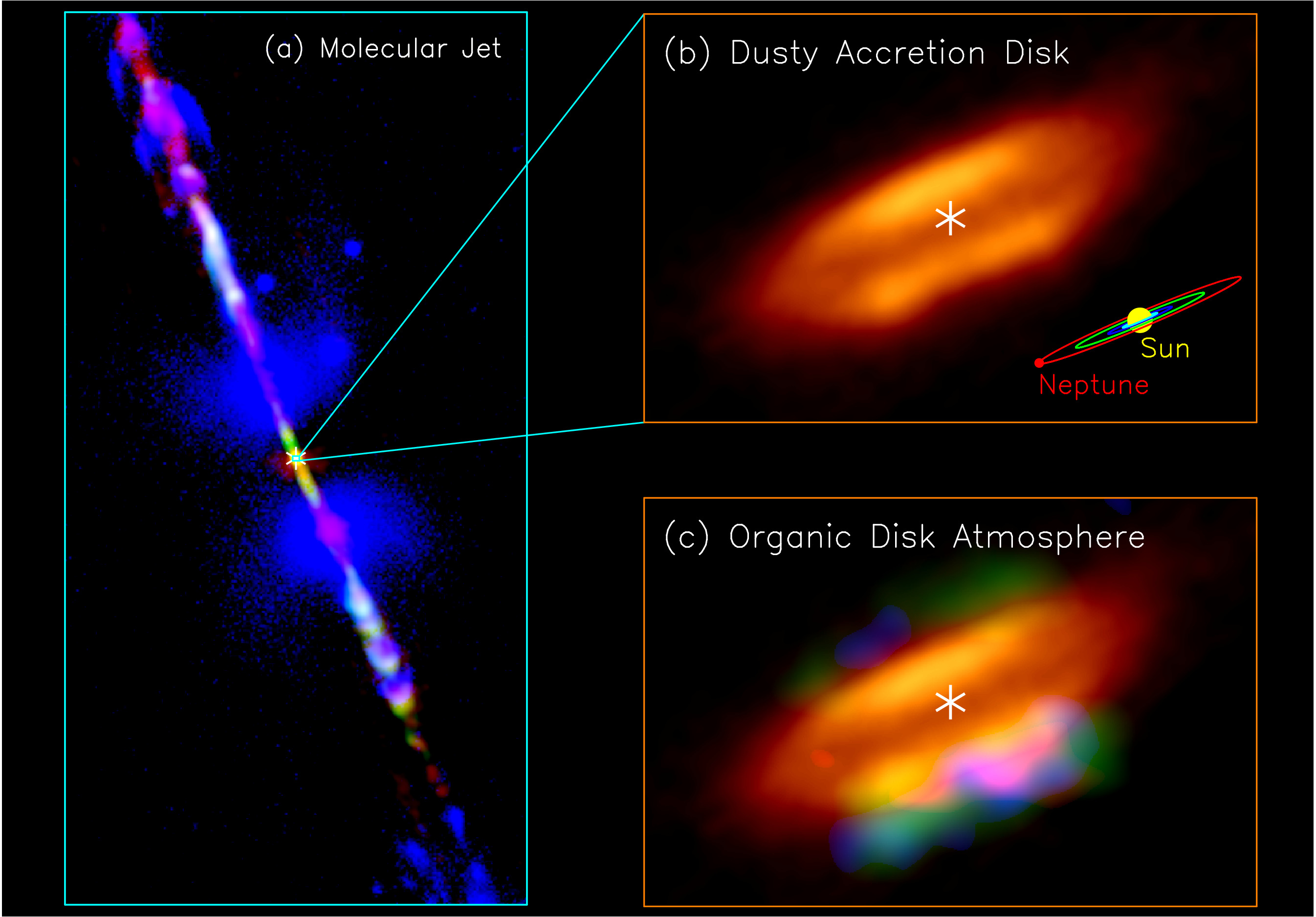Stars are the building blocks of our Galaxy and most of them
are low-mass stars like our Sun. Therefore, the formation of low-mass stars
has direct influences on the evolution of our Galaxy. More importantly, the
formation of low-mass stars and their planets has direct implications on the
formation of our Solar System and the origin of life. Once formed, the
low-mass stars can live as main-sequence stars for about 10 billion years by
fusing hydrogen in their cores. There are also failed stars called ``brown
dwarfs'' that do not have enough mass to fuse hydrogen in their cores. It is
still not fully clear yet if they can form like low-mass stars and why they can not gain
enough mass to be real stars.
My research has been focused mainly on
low-mass (Sun-like) star formation, some on the shaping mechanism of
protoplanetary nebulae (PPNs) in the stellar evolution, and some on brown
dwarf formation. I perform my research mainly with radio interferometric
observations [using Atacama Large Millimeter/submillimeter Array (ALMA),
Submillimeter Array (SMA), Berkeley-Illinois-Maryland Association (BIMA)
Array, Very Large Array (VLA)], radiative transfer modeling, and
(magneto)hydrodynamical simulations.
ALMA is currently the largest
radio interferometry array in the world, with unprecedented resolution and
sensitivity in millimeter and submillimeter wavelengths, and is thus the
best instrument to study the star formation in the early phase. With
ALMA, I have obtained a few breakthrough discoveries in star formation, with
some highlighted by the following Press Releases.
